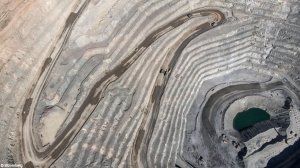The Copper Mark, the Mining Association of Canada (MAC), ICMM and the World Gold Council (WGC) are working towards consolidating their individual voluntary responsible mining and metals standards into a single global responsible mining standard and multi-stakeholder oversight system.
This collaboration responds to direct feedback from investors, civil society, customers, policy-makers and mining companies that confirmed the appetite for a less crowded and complex standards landscape that is more transparent, robust and encourages wider industry participation to drive impact at scale, the entities say.
The process will seek to take the best attributes of each organisation’s standard as the foundation for developing a single global standard that will be practical and implementable by any mine operator regardless of commodity, geography or size.
Implementation of the standard will be overseen by an independent, multi-stakeholder governance body and a credible assurance process, both of which are to be defined and developed as part of this exercise.
The proposed standard could, at the outset, have the widest coverage of any voluntary responsible mining standard to date, with initial implementation by more than 80 mining companies with around 700 operations in almost 60 countries worldwide, the entities point out.
Broader participation by companies beyond the four organisations is expected to help the industry to further raise the bar on environmental, social and governance performance.
The development process is being informed by multi-stakeholder and industry advisory groups that will play an essential role in providing a balanced perspective on the proposed standard, assurance process and governance model.
Inclusive engagement and consultation are highlighted to be at the core of this process.
The draft standard will be shaped by wide-ranging stakeholder engagement and feedback through a public consultation that is expected to launch in 2024.
“The Copper Mark offers a robust assurance framework for copper, molybdenum, nickel and zinc that is governed to equal parts by industry and non-industry representatives. In an increasingly complex landscape of sustainability initiatives, exploring the option of converging responsible mining standards provides us with an opportunity to build on the strengths of each existing system with a view to scale the implementation of responsible practices across the mining industry.
“A strong, site-level assurance process, engagement with all impacted stakeholders and multi-stakeholder oversight will be essential to build support for a converged standard and its implementation,” avers The Copper Mark executive director Michèle Brülhart.
“Everything we do at ICMM is aimed at helping raise the standards of responsible mining, represented by our mining principles. As a condition of membership, these principles and their accompanying site-based performance expectations have helped deliver significant change across approximately 650 sites in over 50 countries where our members operate, and many others beyond.
“This change will need to continue and reach all parts of the global mining industry to foster a safe, just and sustainable world enabled by responsibly produced metals and minerals. Key to this is having a multi-stakeholder governed standard for responsible mining that drives continuous improvement at scale,” says ICMM president and CEO Rohitesh Dhawan.
“When MAC first launched Towards Sustainable Mining in 2004, it was unique as a site-level performance system with independent assurance and multi-stakeholder oversight. Today, the landscape has changed and there are a number of different mining standards with some of the same attributes.
“A consolidation of several of today’s standards into one can simplify the landscape for customers, investors, civil society and the mining industry itself. MAC brings to this exercise a commitment to building a new standard that drives performance improvement, is fully transparent and embraces the views and perspectives of impacted communities,” asserts MAC CEO and president Pierre Gratton.
“The Responsible Gold Mining Principles set out an overarching framework that defines what constitutes responsible gold mining and has been widely adopted by the gold mining industry and accepted by a broad range of stakeholders.
“Recognising that many of our members produce other metals as well as gold, and additionally, report across a number of different responsible mining standards and reporting frameworks, we believe that it is appropriate to explore the potential in developing a single, global framework that covers all commodities.
“We strongly believe that responsible mining underpins sustained socioeconomic development and therefore we support efforts to increase wider adoption of responsible mining standards,” adds WGC CE David Tait.
Edited by: Chanel de Bruyn
Creamer Media Senior Deputy Editor Online
EMAIL THIS ARTICLE SAVE THIS ARTICLE
ARTICLE ENQUIRY
To subscribe email subscriptions@creamermedia.co.za or click here
To advertise email advertising@creamermedia.co.za or click here













